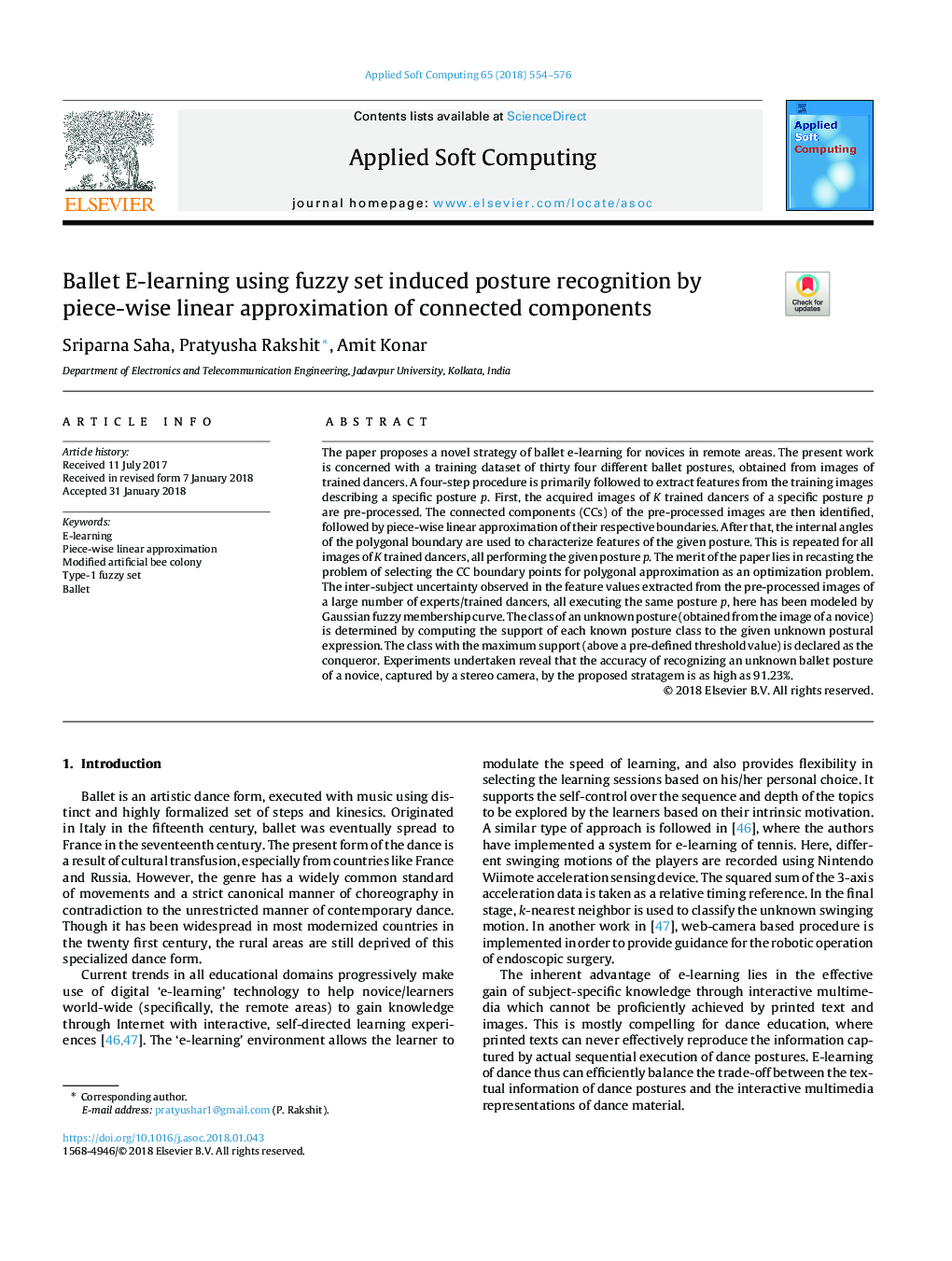| Article ID | Journal | Published Year | Pages | File Type |
|---|---|---|---|---|
| 6904067 | Applied Soft Computing | 2018 | 23 Pages |
Abstract
The paper proposes a novel strategy of ballet e-learning for novices in remote areas. The present work is concerned with a training dataset of thirty four different ballet postures, obtained from images of trained dancers. A four-step procedure is primarily followed to extract features from the training images describing a specific posture p. First, the acquired images of K trained dancers of a specific posture p are pre-processed. The connected components (CCs) of the pre-processed images are then identified, followed by piece-wise linear approximation of their respective boundaries. After that, the internal angles of the polygonal boundary are used to characterize features of the given posture. This is repeated for all images of K trained dancers, all performing the given posture p. The merit of the paper lies in recasting the problem of selecting the CC boundary points for polygonal approximation as an optimization problem. The inter-subject uncertainty observed in the feature values extracted from the pre-processed images of a large number of experts/trained dancers, all executing the same posture p, here has been modeled by Gaussian fuzzy membership curve. The class of an unknown posture (obtained from the image of a novice) is determined by computing the support of each known posture class to the given unknown postural expression. The class with the maximum support (above a pre-defined threshold value) is declared as the conqueror. Experiments undertaken reveal that the accuracy of recognizing an unknown ballet posture of a novice, captured by a stereo camera, by the proposed stratagem is as high as 91.23%.
Related Topics
Physical Sciences and Engineering
Computer Science
Computer Science Applications
Authors
Sriparna Saha, Pratyusha Rakshit, Amit Konar,
